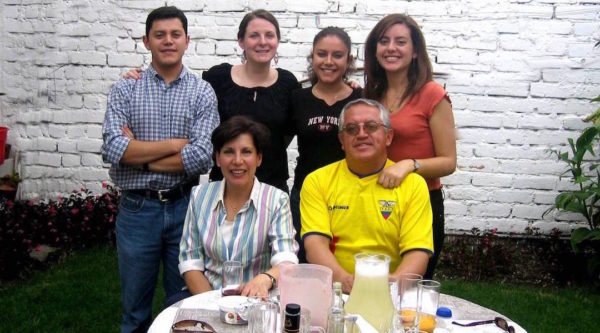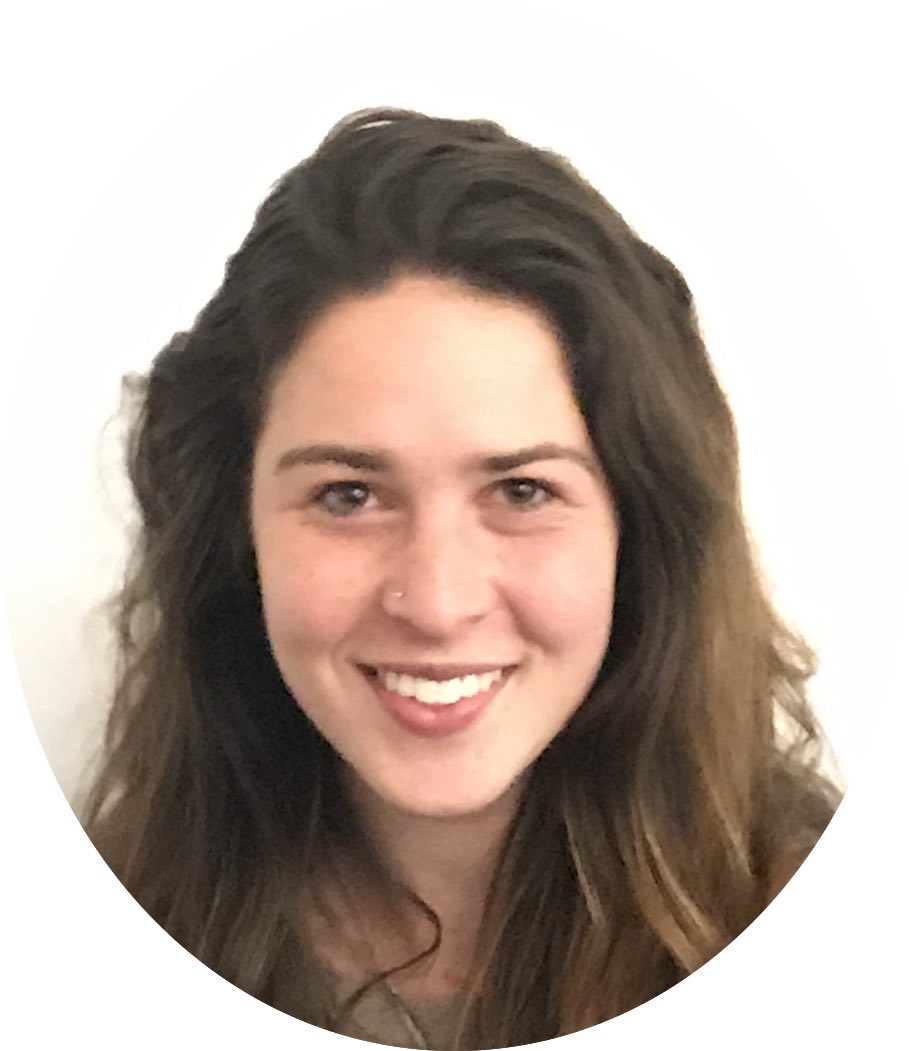Overview
CEDEI’S Fall Semester in the Andes combines quality academic content with an extended intercultural and language experience. Live and study in Cuenca, Ecuador, while also traveling to some of South America’s must-see sites: Machu Picchu! Our semester is open to students from a wide range of majors with or without previous Spanish knowledge.
Participate actively with locals and get a unique cultural experience by living with a host family! Visit local sites of interest such as and museums, national parks and Incan ruins! Gain skills in Latin rhythms with our dance classes, learn how to prepare traditional food with our cooking classes and explore your creative side in our pottery workshops. Discover Ecuador’s ethnic and ecological diversity with CEDEI this semester!
Program Calendar
Our program is designed to offer you the most enriching experience abroad. Our team works hard to ensure you receive superior quality education while becoming culturally competent in Latin America.
We are currently working on the program calendar and will launch soon!
Course Catalog
Understanding course descriptions:
- The first line of each description includes the course number and title;
- Credits are indicated in parentheses.
- At the end of each description is a link to the course syllabus, if available.
- Not all courses are taught every semester. The syllabi are to be used as a general guide. If you have specific questions, concerns, or need to verify that a syllabus is up-to-date, please contact a CEDEI .
Included Travel
Quito
Quito, formally San Francisco de Quito, is the capital city of Ecuador, and at an elevation of 2,830 meters (9,350 feet) above sea level, it is the highest capital city in the world housing the country’s administrative, legislative and judicial functions. The students will visit the Capilla del Hombre, the famous museum containing many works by Ecuadorian artist Oswaldo Guayasamín, and they will also participate in a City Tour, visiting the historic center, La Catedral, La Compañía de Jesus, buildings of political importance, and many other culturally relevant sites located throughout the city.
- Altitude: 2,830 m (9,350 ft)
- Normal Temperatures: 10° - 27° C (50° - 80° F)
- Climate: Subtropical Highland
- Number and difficulty of hikes: 1 city tour, 2/10 difficulty.
Otavalo
Our students visit Otavalo, located north of the Equator and about 100 kilometers north of Quito, the capital. Here, the tranquil streets and sprawling markets will provide an interesting contrast to the modern city of Quito. In recent times, the market has begun to focus strongly on the tourist trade, although thousands of indigenous from the surrounding communities still descend on market day to buy and sell. They are considered to be one of the most successful indigenous groups in Latin America, and can be found selling their wares in almost every Ecuadorian city, as well as in Europe and the United States. While in Otavalo students will visit Taller Mindada, a cultural site specializing in the local history and development of various textiles, as well as a musical workshop where students will be able to see the creation of a simple Andean instrument and try playing others.
- Altitude: 2,550 m (8,415 ft)
- Normal Temperatures: 10° - 27° C (50° - 80° F)
- Climate: Dry, Mediterrean-Temperate, Sub-Andean Valley
Mitad del Mundo
The Mitad del Mundo (Middle of the World) monument in the town of Cayambe, between Quito and Otavalo, marks the place where, in 1736, Charles-Marie de La Condamine’s expedition made the measurements that located the Equator. Despite this accomplishment the French team of scientists was off by 300 meters, an error which was discovered upon the invention of the global positioning system GPS. Nevertheless, it is a great place to get a photo with one foot in either hemisphere. A pre-Columbian monument from one of Ecuador’s pre-historic cultures was discovered on the hill in front of the monument, on the exact line of the Equator. There is also a museum that contains a model of Quito, a planetarium, various exhibits, several restaurants, an open arena that is occasionally used for folkloric-dance performances, and a small chapel where couples can marry with one spouse standing in the northern hemisphere and the other in the southern.
Amazon Rainforest
Our students travel to the Oriente; moving from the high altitude of the Andes, to the lush rainforests on the eastern side of Ecuador. This trip highlights the diversity that Ecuador has to offer, and is an important part of the semester. We visit Misahualli, which is the river port of the Ecuadorian Amazon. It is a natural resort with white sand rivers, decorated with dozens of trees that are home to capuchin monkeys. The port is located at an altitude of 517 meters (1,700 ft) above sea level, with an average temperature of 25° C, and is part of the high forest. Its main characteristic is the abundant biodiversity per square meter, one of the largest in the world in number of endemic species of flora and fauna. The most important natural attraction is its sandy beach about 700 m. long, which is the point of entry for jungle excursions.
- Altitude: 517 m (1,700 ft)
- Normal Temperatures: 23° - 30° C (73° - 86° F)
- Climate: Humid Tropical Rainforest
- Number and difficulty of hikes: 1 hike, 5/10 difficulty.
Salasaca & Patate
Salasaca is a village inhabited by some 12,000 Salasaca Indians famous for their exquisite tapestries, history, and for being one of the most vibrant indigenous cultures of Ecuador. This group which was once located in Bolivia, but was conquered by the Incas and forced to move, thereby being less of a threat to the Incan empire. This tribe is considered one of the most interesting ethnic groups because of their surly and rebellious social behavior, strong traditions and customs their reluctance to mix with whites, and because they still live in relative isolation. As you head southeast from Salasaca towards río Patate, nestled precariously in a steep valley you will begin to catch smoky glimpses of the famous Volcán Tungurahua, the 5,016m peak which is always threatening imminent eruption. From the town of Patate, where you will be staying in the Hacienda Leito, you might get the chance to hear, feel, and see Tungurahua giving a spectacular show of bursting lava cascading down its sides. Not to worry, although the hacienda in Patate sometimes will receive a light dusting of ash, there is nothing to be concerned about for it is at a safe distance from the thundering giant.
- Altitude: 2,200 m (7,260 ft)
- Normal Temperatures: 7° - 18° C (45° - 64° F)
- Climate: Subtropical Highland/High Montane Forest
- Number and difficulty of hikes: None
Ingapirca Archaeological Site
The ruins of Ingapirca, located approximately two and a half-hours from Cuenca, are the most important Incan ruins in Ecuador. Ingapirca is set on a picturesque hillside and overlooks a small village of the same name. The area surrounding the ruins is used primarily for agriculture and raising cattle, with traditional methods (hand and animal power) still used by the majority of farmers.
The main structure, the so-called Temple of the Sun, demonstrates some of the Incas’ finest mortar-less stonework, and is surrounded by seemingly less important ruins thought to be residences and storehouses. There is still debate over the use of the ruins, and archaeologists have at times referred to the ruins as a temple, fortress or as a royal stopover for imperial runners between Quito and Tomebamba (Cuenca).
- Altitude: 3,210 m (10,300 ft)
- Normal Temperatures: 10° - 27° C (50° - 80° F)
- Climate: Subtropical Highland/Valley
- Number and difficulty of hikes: 1 hike/walk, 3/10 difficulty.
El Cajas National Park
Declared a national recreation area in 1977 and a national park in 1996, "El Cajas" ("boxes") covers an area of 29,000 hectares (72,000 acres) of mountainous terrain between 9,700-13,500 feet. The park is situated on the western cordillera at the continental divide, about 30 km west of Cuenca. A once-glaciated region (note the "U"-shaped valleys and craggy peaks) over 400 lakes and lagoons formed after the last ice age, around 12,000 years ago. Today, the park is littered with these paternoster lakes, all interconnected by visible and subterranean rivers and waterfalls. High altitude and moisture are the dominant climactic variables in El Cajas, forming two interesting ecosystems: Montaine cloud forest and Andean páramo, or shrubby high altitude grassland.
- Altitude: 2,940 - 4100 m (9,700 – 13,500 ft)
- Normal Temperatures: 0° - 25° C (32° - 77° F)
- Climate: High Montaine Forest/Andean Páramo
- Number and difficulty of hikes: 1 hike, 7/10 difficulty.
Saraguro
Like the people of Salasaca, the Saraguros were originally sent to their current location an hour north of the city of Loja – it is thought from Bolivia – by the Incas under their system called "Mitimae," a way of controlling "troublesome" groups. Perhaps for this reason the culture of the Saraguros has remained defiantly strong. Some say that their distinctive black clothing is due to them remaining in mourning for their old home, but a more practical explanation is that it keeps them warm in an area with an extremely varied climate. The traditional Saraguro dress is: the men sport ponytails, hats, black ponchos and knee-length black trousers; the women wear pleated black skirts, shawls fixed with a pin, and the famous wide-brimmed while hats decorated with black spots under the brim. A high-quality Saraguro poncho retails for up to $400!
The area itself is also fascinating. The town center is of the colonial era, with many old mud buildings in the main plaza and streets around it. On Sundays people come from all over the country to buy and sell produce at the Saraguro market, creating a buzz in the normally sleepy town. In the villages that surround Saraguro – such as Gera, Oñakapak and Lagunas – there are great opportunities for hiking and camping.
- Altitude: 2,600 m (8,580 ft)
- Normal Temperatures: 5° - 25° C (40° - 77° F). Very cold at night!
- Climate: Subtropical Highland/Valley
- Number and difficulty of hikes: 1 hike, 7/10 difficulty
Gualaceo & Chordeleg
The small town of Gualaceo hosts the largest indigenous market in the area, where one can purchase fruits, vegetables, meat, spices, etc. There is both an indoor and an outdoor market. You can see indigenous vendors dressed in their colorful traditional clothing. Every Sunday campesinos and tourists come to buy goods. You can find fine woven and embroidered goods and if you get there early enough a very large selection of wool sweaters. In addition, a trip to the animal market could be an unforgettable experience. You may also want to take a walk along the river and visit the town church and plaza. Up the hill is the town of Chordeleg, which is famous for its jewelry and handicrafts museum. Students will also visit a local workshop which specializes in filigree, or fine silver jewelry.
- Altitude: 2,370 m (7,820 ft)
- Normal Temperatures: 15° - 25° C (59° - 77° F)
- Climate: Subtropical Highland/Valley
Girón & Tarqui
Girón is located about 44km southwest of Cuenca and is part of a particular region with great importance to the history of Ecuador. It is in this region where the Battle of Tarquí was fought in 1829 and was a key victory leading to the independence of Ecuador (then called Gran Colombia). Girón is located in the Yunguilla Valley which, with its warm weather, is a favorite weekend haunt of Cuencanos. During the drive you can experience the beauty of this part of Ecuador. There you will be able to hike to three incredible waterfalls, called chorreras, and pass rivers teeming with trout. From the waterfalls you can see the town of Girón in the valley below on a clear day.
Tarqui is located to the south of Cuenca, towards the Yunguilla Valley. Tarqui is the site of a major battle fought between Ecuadorian (Gran Colombian) and Peruvian troops soon after Ecuador’s independence. Despite being outnumbered, Ecuadorian troops won a decisive victory and secured their independent (or Gran Colombian affiliated) status. Today, the area is primarily a dairy-producing region, providing much of Cuenca’s milk.
- Altitude: 2,100 m (6,930 ft)
- Normal Temperatures: 8° - 21° C (47° - 70° F)
- Climate: Subtropical Highland/Valley
Guayaquil
The capital city of the province of Guayas, Guayaquil, is not only the largest city in Ecuador, but also the nation’s main port and the center of Ecuador’s manufacturing and fishing industry. With a current population of approximately 2 million inhabitants, the generally hot and humid climate has transformed in recent years from a seemingly disorganized city to an international destination and the focal point for export of common products such as banana, cacao, coffee, minerals, flowers and textiles. This large natural port on the Pacific coast contains a rich mix of biodiversity as a result of the convergence of the salty Pacific waters and the fresh water from the Guayas river allowing locals to make a living through fishing and collecting a variety of shellfish.
Machu Picchu
As a final trip, the Fall Semester in the Andes students have the unique opportunity to travel to Peru for 7 days. This trip will introduce students to the bustling city of Lima, the ancient capital of the Inca, Cuzco, and the "Lost City" of the Inca, Machu Picchu. This tour takes place in the company of qualified and experienced staff and guides who will enrich the students´ understanding and enjoyment of these incredible sites. Perú is the third largest country in South America and shares borders with Ecuador, Colombia, Brazil, Bolivia, Chile, and the Pacific Ocean. It is home to many Pre-Incan, Incan, and colonial treasures. Its location and the presence of the Andes Mountains make each of its four regions unique in climate, flora, and fauna.
The seven-day study tour in Perú includes airfare, guided tours of the Capital of the Inca Empire: Cusco, one of the New Seven Wonders of the World: Machu Picchu, and many other archeological sites of great historical importance, entrance fees, transportation in Perú, a farewell dinner where students can taste flavors from the four different regions of Perú, plus a tour of the City of Kings,: Lima, and a visit to the largest fountain complex in the world!
Cusco
This famous city, which the Incas founded as the Capital of their vast Empire, has been recognized as Latin America`s Archeological Site and Cultural Heritage of the World. Located in the Andes of Perú, at 11,151 feet above sea level, Cusco is home to many Incan temples and Palaces and to amazing Colonial constructions. CEDEI students participating in this trip have a chance to visit important archeological sites such as: the Fortress of Saqsaywaman, the sacred sanctuary of Qenqo, the Baths of the Princess at the resort Tambomachay, the Incan Temple Qorickancha, and of course the lost city of the Incas: Machu Picchu! Students are accompanied in all of these educational tours by a native guide, who provides ample explanation about the history of Perú from the flourishment of the Inca Empire to modern times.
Lima
Lima is the second largest city located in a desert, after Cairo, Egypt. This socio-economical center was founded in 1542 as the capital of the Viceroyalty of Perú, the most important in South America. It was called City of Kings during the Spanish regime, and for almost two centuries it signified the most important treasure of Spain, because of its political, social, and cultural power. The tour of Lima starts in the historical downtown area and ends in one of the main highlights of the city: the Magic Water Tour in Parque de la Reserva, a park with 13 interactive fountains. It is the record holder for the largest fountain complex in the world.
- Altitude: 160 m (Lima) – 3,400 m (Cuzco) (530 – 11,220 ft)
- Normal Temperatures: 10° - 24° C (50° - 75° F)
- Climate: Subtropical Highland/Mountains
- Number and difficulty of hikes: 3 hikes, 9/10 difficulty.
Homestay
As an integral part of our programs, our department offers our students the opportunity to stay with a host family in order to provide them with an invaluable experience. Beyond their normal schedules, the students have the opportunity to be immersed in the culture, customs, and the daily life of Cuenca; an enriching experience for both the students and for the families who host them, resulting in a true cultural exchange.
Taking into consideration that the experience of living with a host family in another country is a very important part of the international studies program, the Department of International Programs has a host family coordinator who is responsible for the careful selection of the families best suited to receive our students in their homes. The evaluation of potential host families will be based on the distance from their house to CEDEI, their motivation(s) for receiving a student, and the willingness and desire of the family to accommodate an international student while sharing their home and personal lives with them.
It is very important that the student fills out the ‘Homestay Questionnaire’ as honestly as possible. Once the homestay questionnaires have been received from our students, the coordinator will then discuss in detail the student preferences, personalities, and interests with their future Ecuadorian family. Our careful process is to assure a pleasant stay with the hopes of an unforgettable and rewarding experience through which our students will create bonds and close friendships with their host families.

Program Cost
| Detail | Cost |
|---|---|
| Semester Tuition fees | $6,595.00 |
| Host family** | $3,000.00 |
| Ground airport transfers in/out, Field trips, Excursions, PERU trip and flight | $3,730.00 |
| TOTAL | $13,325.00 |
NOTES: *Program does not include international airfare. No visa application is required, most foreign students can enter Ecuador as tourists for up to 90-days.
**Housing with host families includes: a private room, 21 meals per week (3 meals per day), laundry service, and internet service, during the program in Cuenca, Ecuador.
IF YOU ARE A STUDENT FROM IOWA STATE UNIVERSITY, SIENA COLLEGE, SYRACUSE UNIVERSITY, TOWSON UNIVERSITY, OR THE U. OF WISCONSIN-WHITEWATER, PLEASE CONTACT THE STUDY ABROAD OFFICE AT YOUR SCHOOL. WE HAVE DIRECT AGREEMENTS WITH THESE INSTITUTIONS
If your school is member of ISEP, please check their website to apply at a discounted cost
Study abroad during this Fall Semester in Ecuador! Register now to live and study in Cuenca while learning about local culture and perfecting your Spanish! Our semester program also includes travel to Machu Picchu!
Program tentative dates: August 28 - December 13, 2024
Applications open soon!









